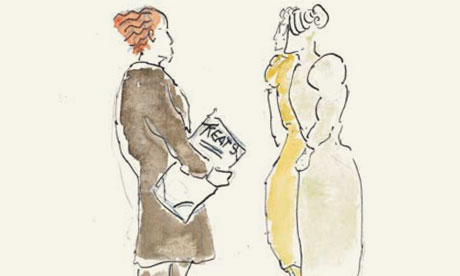http://enmarchaconlastic.educarex.es/ 11/02/2013¿Quieres que tus libros escolares hablen?, ¿te gustaría presentar la información con diferentes formas de representación?, ¿crees que puedes facilitar la accesibilidad de los contenidos curriculares?, ¿cómo podrías favorecer la interactividad entre el alumnado y los recursos educativos online de un modo didáctico?… Puedes encontrar respuesta a todas estas preguntas gracias a la herramienta para diseñar y gestionar tus propios libros escolares, denominada Book-Builder. Se trata de una aplicación que facilita la creación de libros electrónicos e interactivos cumpliendo los principios del diseño universal para el aprendizaje (DUA), que pone a nuestra disposición de manera totalmente gratuita el Centro para la Tecnología Especial Aplicada (CAST).
Ya hicimos una breve referencia a esta aplicación en el artículo “Avanzando en la accesibilidad de los aprendizajes”, publicado en este mismo blog en noviembre de 2012. En aquella ocasión te presentamos varias herramientas tecnológicas para propiciar la accesibilidad de los aprendizajes conforme a losprincipios del DUA. Ahora queremos guiarte en los pasos a seguir para utilizar eficazmente Book-Builder.
Lo primero que debes hacer es visitar su web y registrarte, sabiendo que su uso requiere de conexión a Internet (es una herramienta online). Que no te asuste verlo en otro idioma, ten en cuenta que tienes la opción de trabajar con Book-Builder en español. Puedes cambiar el idioma en la parte superior-derecha de la web.
Como podrás comprobar, Book-Builder te permite crear, editar y publicar libros electrónicos que cumplen los principios del DUA, con contenidos accesibles para diferentes tipos de alumnos. También puedes leer-comentar otros libros creados con este recurso en la biblioteca pública de Book-Builder y compartir los tuyos con toda la comunidad.

Cuando te hayas logueado con tus datos de usuario y contraseña, una de las opciones es “Crear y editar Mis libros”, opción que te permite diseñar un libro electrónico desde el principio o bien retomar uno ya creado para editarlo.
Comencemos a diseñar un nuevo libro con Book-Builder. Es importante haber realizado previamente un trabajo de planificación de los contenidos y recursos que como docente quieres que incluya tu libro electrónico (apartados y subapartados, contenido escrito, imágenes que ilustren el contenido, audio, enlaces de interés, etc). Puedes tratar cualquier temática, y en menor o mayor grado de complejidad, como desees. Por ejemplo, diseñemos un libro sobre los animales vertebrados:
1º) Incluiremos todos los datos necesarios sobre el libro, como: título, autor, nivel al que va dirigido, idioma del libro, ayudantes para presentar los contenidos, etc. Los ayudantes sirven para suministrar al lector el apoyo necesario para leer estratégicamente y mantener su entusiasmo por aprender. Puedes decidir cómo quieres que le ayuden, el nombre que han de tener e incluso puedes asociarlos a fotos de tus alumnos; es un modo de incentivarles.
2º) Después tendremos que asignarle una portada, un índice y las páginas de contenido. En estas páginas tenemos la posibilidad de agregar audios, texto, imágenes, actividades para el alumno, hiperenlaces, un glosario de términos, etc. Debes ir editando cada página para añadirle su contenido correspondiente; tienes varios modelos de plantilla a tu disposición. También puedes previsualizar tus avances en la edición del libro desde el botón “Anticipo”. Observa en el siguiente vídeo el resultado del libro electrónico “Los animales vertebrados”, un sencillo ejemplo donde hemos añadido una portada, un índice y dos páginas de contenido. Debes saber que el índice se genera de forma automática a medida que vas añadiendo páginas nuevas.
3º) Cuando hayas finalizado el libro, debes pulsar en el botón “Libro terminado”. No obstante, ya sabes que puedes volver a editarlo cuando quieras para añadirle las modificaciones oportunas.
4º) Un paso posterior puede ser su publicación, de tal modo que el libro estaría a disposición en labiblioteca pública de Book-Builder; y también puedes compartirlo con tus compañeros, alumnos, familiares, etc. a través del correo electrónico. Otras opciones de utilidad son: ejemplos de libros-modelo, consejos y recursos, posibilidad de imprimir los libros, de hacer comentarios sobre ellos y de descargar tus libros en un archivo comprimido.
Desde la sección preguntas frecuentes (PF) puedes acceder a un completo listado de cuestiones a modo de “ayuda” que responderán a tus dudas y te guiarán en el uso de Book-Builder para sacarle mayor rentabilidad.
Sin duda alguna esta aplicación tiene una gran potencialidad como recurso para facilitar la accesibilidad de los aprendizajes; nosotros te hemos acercado sólo a algunas de sus ventajas, pero es indudable que sus posibilidades van mucho más allá; y por eso te animamos a investigar con esta herramienta, ¡podrás sacarle mucho partido! ¿Te atreves con Book-Builder?






.jpg/800px-US_Patent_1773079_(Fig_1).jpg)















![Books on the shelf with Library of Congress bookmarks ready for labeling. Photo by Allison Hasselfield.]](http://www.vancouverarchives.ca/wp-content/uploads/2013/01/Hasselfield_BlogPost-009.jpg)














